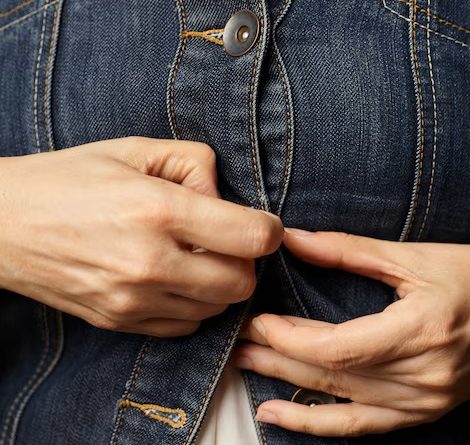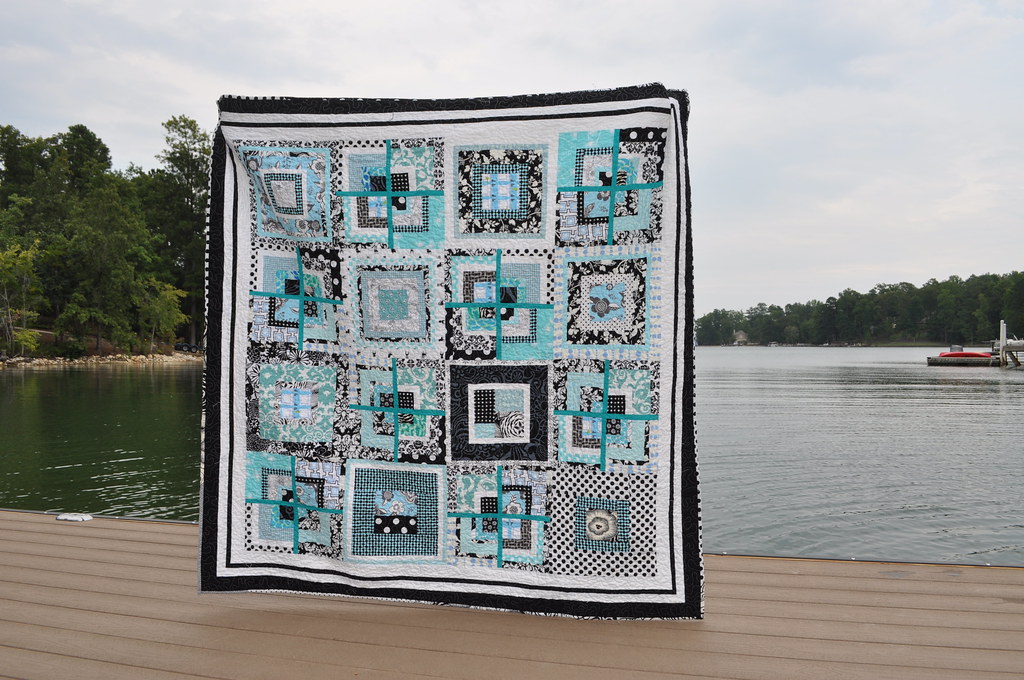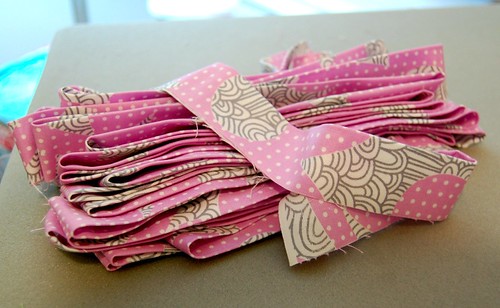Mastering Invisible Mending Techniques for Flawless Jean Repairs
In the world of garment care, the art of fine fabric restoration holds immense value. This practice allows individuals to breathe new life into cherished items, extending their lifespan and maintaining their charm. The ability to execute these delicate techniques not only enhances personal style but also promotes sustainability in fashion.
Within this exploration, we will delve into methods that allow for seamless integration of repairs, ensuring that the essence of the original piece remains intact. Mastering such skills requires patience and a keen eye for detail, enabling the artisan to address imperfections with confidence and precision.
Embracing these restoration strategies can transform even the most worn pieces into treasures once again. As we navigate the nuances of this intricate craft, you will discover that the journey to refine your skills is as rewarding as the end result.
Understanding Invisible Mending Basics
This section explores the foundational principles of a subtle and effective restoration method used to repair fabric without compromising its aesthetic appeal. The process involves careful techniques aiming to seamlessly integrate patches and weaves into the existing material, resulting in repairs that are nearly undetectable. This art not only enhances the lifespan of garments but also maintains their original charm.
Key Components of the Process
Several essential elements contribute to successful fabric restoration. Understanding these components will facilitate a deeper appreciation and execution of the craft.
| Component | Description |
|---|---|
| Material Selection | Choosing a fabric that closely resembles the original is crucial for achieving a seamless look. |
| Color Matching | Finding a thread or dye that matches the original color helps blend the repair. |
| Weaving Method | Employing similar weaving techniques to maintain the texture and pattern of the fabric. |
| Tools Required | Using appropriate tools, such as needles and threads, is essential for precision and quality. |
Benefits of This Approach
This restoration method offers numerous advantages, not just for the longevity of clothing but also for the environment. By extending the life of your garments, you reduce waste and contribute to sustainable fashion practices. Additionally, the skill involved in these repairs can provide a sense of accomplishment and creativity.
Essential Tools for Jean Repairs
Having the right equipment can significantly enhance your ability to restore and maintain your favorite denim pieces. The following items are indispensable for achieving seamless outcomes in your endeavors. Whether you’re tackling small rips or larger issues, equipping yourself with these essentials will make the process smoother and more effective.
1. Quality Sewing Needles: Using needles that are specifically designed for heavier fabrics will ensure clean stitching. Needles with a wedge-shaped point are perfect for penetrating thick denim layers.
2. Durable Thread: Selecting a strong thread is crucial. Opt for polyester or cotton-wrapped polyester, as these materials offer resilience and can withstand the stress of everyday wear.
3. Fabric Scissors: A sharp pair of fabric scissors is key for precise cuts. Dull blades can lead to frayed edges and uneven lines, compromising the final look.
4. Iron and Ironing Board: Pressing your fabric before and after working on it can greatly improve the appearance of your stitching. A flat surface ensures that you are starting with a smooth base.
5. Pins and Clips: Keeping fabric layers in place is vital. Pins or fabric clips secure your materials together, allowing for accurate sewing and minimizing slippage.
6. Seam Ripper: Mistakes happen, and having a seam ripper on hand allows for easy removal of unwanted stitches without damaging the surrounding fabric.
7. Optional Reinforcement Materials: Depending on the repair, fusible interfacing or patches can provide additional support and durability to areas of weakness.
Equipped with these foundational tools, you’ll be well-prepared to tackle any challenges that come your way, transforming your denim garments into long-lasting treasures.
Step-by-Step Guide to Mending
Whether you’re looking to extend the life of your favorite pairs or simply want to learn a rewarding skill, understanding the process of fabric restoration can enhance your wardrobe. This guide will lead you through essential stages that transform flawed garments back to their original charm, ensuring they remain a staple in your collection.
Begin by gathering your materials: a needle, suitable thread, scissors, and an iron. Choose a thread color that closely matches the fabric to maintain a seamless appearance. Once you’re prepared, inspect the area that needs attention, identifying any tears or worn spots that require fixing.
Next, clean the garment thoroughly to remove any dirt or oils, as this will promote better adhesion and a more polished finish. Lay your fabric flat on a smooth surface, with the damaged section exposed. Carefully align the edges of the fabric, ensuring they are snugly fitted together.
Now, using a needle and thread, begin stitching from the inside, allowing for a secure yet discreet closure. Utilize small, even stitches to create a consistent look, moving rhythmically along the edge of the damage. If you notice any frayed threads, trim them before proceeding to avoid complications later.
Once sewn, take the time to reinforce the area if necessary. This step may include additional stitching or applying a patch from the inside to bolster the fabric’s strength. After your work is finished, press the area with an iron to smooth out any wrinkles, blending the repair seamlessly with the surrounding material.
Finally, admire your handiwork! With practice, each restoration will become easier and more efficient, allowing you to keep your treasured items looking impeccable for years to come.
Choosing Fabrics for Seamless Patches
Selecting the right materials is crucial when aiming for an effective and aesthetically pleasing restoration of your favorite garments. The choice of fabric not only determines the overall appearance but also impacts the durability and comfort of the item after the application. Understanding how to harmonize color, texture, and weight can result in an undetectable finish that boosts the longevity of your clothing.
Color and Texture Matching
When opting for patch fabrics, it’s essential to consider both color and texture to ensure a cohesive look. Aim for shades that closely resemble the original material, taking into account factors like fading and wear. Additionally, matching the texture will help the patch integrate seamlessly, allowing it to blend in naturally with the existing fabric.
Weight and Flexibility
The weight and flexibility of the chosen fabric play significant roles in the final result. Lightweight options are often preferable to avoid bulkiness, while stretchy materials can mimic the original garment’s behavior, enhancing comfort. It is important to test the patch fabric against the original piece to ensure compatibility, especially when the item will endure regular movement.
Techniques for Color Matching and Blending
Achieving a harmonious appearance during fabric restoration requires careful consideration of color consistency and integration. The goal is to create a seamless transition between the original material and the patched section, ensuring that the repair is nearly undetectable. This involves understanding the nuances of color and how to apply them skillfully to mimic the existing fabric.
Understanding Fabric Color Characteristics
To start, it is essential to evaluate the original hue and any underlying tones within the fabric. Different lighting conditions can influence how colors appear, so assessing the garment under various lights can yield a more accurate color reading. Carefully analyze the way the fabric reflects light, taking note of any variations that might be present.
Blending Techniques and Application
When working with a patch, the application process plays a crucial role in achieving an effective blend. Start by selecting the nearest color match from your fabric or dye color palette. Layering is an effective method; use thin applications of color to build up to the desired shade gradually. Feathering the edges of the patch with lighter or darker tints can also help meld the new fabric with the existing garment. Ultimately, patience and attention to detail will result in a more cohesive look.
Maintaining Flawless Repairs Over Time
Ensuring that repairs remain undetectable and effective involves ongoing care and attention. Proper maintenance practices can significantly extend the life of your clothing and enhance the overall appearance of any restoration work. Here are some key strategies to uphold the quality of your fixes.
Regular Inspection
Conducting frequent checks can help identify any issues before they escalate. Look for signs of wear and potential stress points. This proactive approach allows for timely interventions.
- Check areas commonly subjected to stress, such as knees and pockets.
- Examine seams for any signs of fraying or loosening.
- Assess the color and texture around the repair site.
Careful Washing and Drying
Washing and drying methods can influence the longevity of your fix. Adopting gentle washing techniques can minimize damage to both the garment and the restoration.
- Use cold water and a mild detergent to preserve fabric integrity.
- Turn the garment inside out to reduce friction during the washing cycle.
- Avoid high heat in the dryer; air drying is preferable.
By integrating these practices, you can ensure that your artistic repairs withstand the test of time, keeping your clothing looking its best.
Q&A: Repairing jeans with invisible mending
What are invisible mending techniques and how do they work for jean repairs?
Invisible mending techniques are specialized methods used to repair fabric without leaving visible traces of the repair. In the context of jean repairs, this involves techniques like using a needle and thread to carefully weave or stitch the fabric together, often matching the original color and texture to make the repair as inconspicuous as possible. The process typically includes cleaning the area to be repaired, selecting a matching thread, and using stitching methods like blind stitching or darning. The goal is to restore the jeans’ appearance and structural integrity while keeping the repair hidden from view.
What tools and materials do I need for invisible mending my jeans?
To master invisible mending techniques for jeans, you’ll need a few key tools and materials. Essential items include a sewing needle, matching thread (preferably denim thread), a pair of fabric scissors, an iron, and some interfacing or fusible patches for strengthening the area. Additionally, having a good quality sewing machine can streamline the process, especially for larger repairs. It’s also helpful to have a seam ripper for removing frayed edges and a tailor’s chalk for marking the repair area. Together, these tools will facilitate a successful invisible mending process.
Can I use invisible mending techniques on all types of fabric, or are they specific to jeans?
Invisible mending techniques can be applied to various types of fabrics, not just jeans. While these techniques are particularly effective for denim due to the fabric’s durability, they can also be used on lighter fabrics like cotton or linen, as well as knits. However, it’s essential to consider the fabric type; delicate fabrics may require different stitch techniques or lighter thread. The key is to tailor your approach to the specific material to achieve seamless repairs without compromising the fabric’s integrity.
What are some common issues or mistakes to avoid when performing invisible mending on jeans?
Some common issues to avoid when performing invisible mending include using the wrong thread color or type, which can make the repair visible, and insufficient fabric support, which can lead to tearing after the repair. It’s also important not to overstretch the fabric while sewing, as this can cause puckering. Additionally, avoid cutting out large areas of damaged fabric, as this may compromise the structure of the jeans. Finally, neglecting to secure edges with a zigzag stitch can result in fraying later on. Taking care in these areas will yield a neater and more professional-looking repair.
How can I maintain the quality of my jeans after performing invisible mending techniques?
After performing invisible mending techniques, maintaining the quality of your jeans involves a few mindful practices. Firstly, washing your repaired jeans in cold water can help preserve both the fabric and the repair, as hot water may weaken the threads. It’s also advisable to air dry your jeans instead of using a dryer, which can create shrinkage and stress on the repairs. Regularly inspect the area for any signs of wear, and don’t hesitate to reinforce the repair if needed. Finally, store your jeans properly to avoid unnecessary stress on the fabric, such as folding them neatly rather than hanging them on a hanger, which can cause stretching.
What are invisible mending techniques and how do they work for jean repairs?
Invisible mending techniques refer to specialized methods used to repair fabric without leaving visible traces of the repair. For jeans, this often involves carefully matching the color and texture of the surrounding fabric, using stitches that are either hidden or mimic the existing patterns of the denim. One common technique is to use a darning method, where the damaged area is covered with thread that is woven in a way that blends in with the surrounding material. Other techniques may incorporate patching, where a piece of denim is sewn behind the hole, and is sewn with a technique that keeps the repair subtle. The goal of these techniques is to make the repair as seamless as possible, allowing the jeans to maintain their aesthetic and structural integrity while extending their lifespan.
How can you repair a hole in jeans using sashiko visible mending?
To repair a hole in jeans using sashiko visible mending, start by placing a scrap fabric underneath the hole in your jeans. Using sashiko embroidery thread, stitch a decorative pattern from left to right across the hole. The stitches should be visible, adding a unique design while reinforcing the fabric.
Where can I find a sashiko mending tutorial online?
You can find a sashiko mending tutorial on YouTube by searching for visible mending techniques. Many creators upload original content showing how to mend ripped jeans with sashiko, providing step-by-step instructions.
What is the purpose of using a darning foot and feed dogs when mending jeans?
The darning foot allows you to control the movement of the fabric while mending jeans, making it easier to stitch small, intricate designs. Lowering the feed dogs helps you freely move the fabric under the needle without the machine pulling it, giving you more control when repairing areas like the crotch or hem.
How can you adjust stitch length when repairing a hem in a pair of jeans?
When repairing a hem in a pair of jeans, you want to make sure the stitch length is set slightly longer than usual. This ensures the stitches blend into the thick denim fabric and provide enough strength to hold the hem securely in place.
How does using a weft thread help when repairing a hole in jeans?
Using a weft thread is essential when mending jeans because it mimics the natural horizontal weave of the fabric. Stitching with the weft thread, from left to right, across the hole helps maintain the structure of the denim and reinforces the repair.
Why should you steam the fabric after mending a hole in jeans?
Steaming the fabric after mending a hole in jeans helps set the stitches and smooth out any puckering around the repair. This final step ensures that the fabric lies flat and the visible mending looks clean and professional.
What kind of embroidery thread should you use for sashiko visible mending on jeans?
For sashiko visible mending on jeans, you should use a thick, durable embroidery thread that contrasts with the denim fabric. This allows the stitches to stand out and creates a decorative effect while strengthening the area around the hole.
What online resources can help with visible mending and tutorials?
You can explore online sewing tutorials, including free patterns, on platforms like Instagram, YouTube, and various blogs. Many creators share supply lists and techniques to help you learn how to mend your jeans, repair the crotch area, or even perform more advanced darning and embroidery techniques.
How can subscribing to sewing channels on YouTube enhance your mending skills?
Subscribing to sewing channels on YouTube gives you access to tutorials, step-by-step instructions, and visible mending techniques like sashiko. Many channels offer chapters within videos to help you jump to specific parts, such as mending a pair of jeans or fixing a hem.
What tools should be in your supply list for mending jeans using visible mending techniques?
Your supply list for visible mending should include a darning foot, embroidery thread, feed dogs, scrap denim for patching, and a pair of jeans that needs repair. Additionally, having a good tutorial handy from YouTube or Instagram can guide you through the process step by step.
How can I access a transcript of a visible mending tutorial for repairing pants?
Many visible mending tutorials for repairing pants on the world of YouTube come with transcripts, which can be accessed by clicking on the “three dots” below the video and selecting “Show Transcript.” This allows you to follow along with the steps while working on the inside of your jeans.
What should I look for when repairing the inside of your jeans?
When repairing the inside of your jeans, focus on reinforcing high-stress areas like the crotch and seat. Use a patch or sashiko stitching technique, paying attention to matching the indigo proof of your denim for a seamless repair that strengthens the fabric without altering the look.
How can I find DIY closet organization ideas for storing pants and jeans?
Search the world on YouTube for DIY closet organization ideas that focus on maximizing space for pants and jeans. Many tutorials offer creative storage hacks, like foldable racks or shelves, to keep your closet neat and your denim collection easily accessible.
What is the benefit of using indigo proof denim when repairing pants?
Indigo proof denim is ideal for repairing pants because it ensures the repaired areas blend well with the original fabric. Whether you’re patching the inside of your jeans or adding reinforcement to stressed seams, matching the indigo proof keeps the repair subtle and durable.



